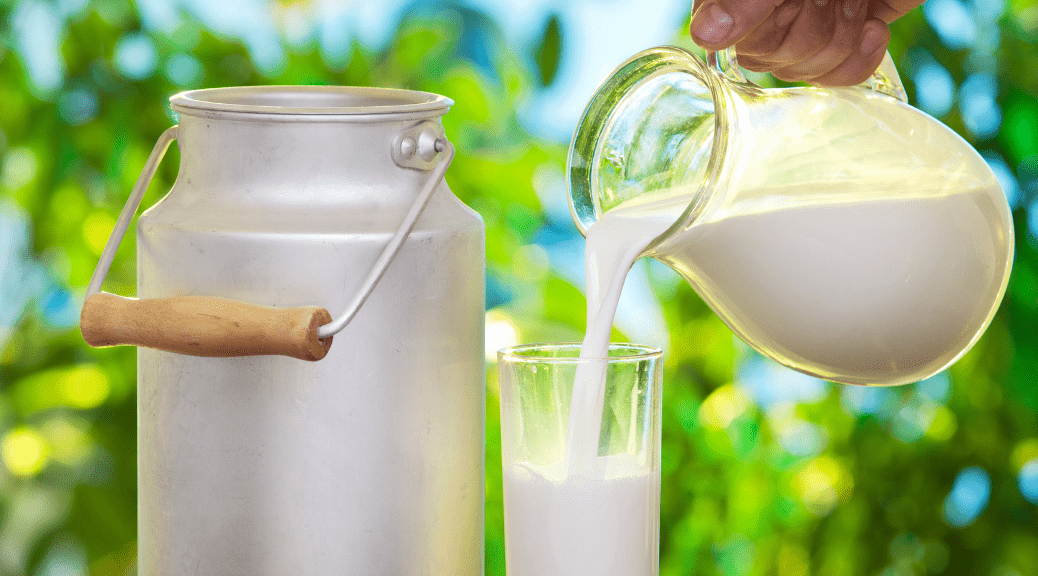In the modern digital landscape, artificial intelligence (AI) is a powerful force influencing consumer decisions. AI algorithms leverage vast data...

Tips to Increase the Chances of Avoiding Health Insurance Claims Rejection
Tips to Increase the Chances of Avoiding Health Insurance Claims Rejection
Health insurance proves invaluable during challenging situations such as medical emergencies. It not only provides financial relief by covering the substantial expenses associated with major diseases but also offers peace of mind. However, this assurance is only realized when you, as the insured, receive the complete claim amount from your health insurance company.
Nevertheless, there are instances when insurance companies deny claims, leaving you responsible for the entire treatment cost. In order to prevent claim rejection by the insurance company, it is crucial to avoid making these mistakes.
Subas Tiwari
Here are 20 potential reasons why health insurance claims could be rejected
- Ineligible or expired coverage:Your policy may have lapsed or you may be attempting to claim for services not covered by your policy.
- Non-covered services:The treatment, procedure, or medication you’re claiming for may not be included in your policy coverage.
- Lack of pre-authorization:Some insurance plans require prior approval for certain procedures, tests, or surgeries, and failure to obtain it can lead to claim rejection.
- Incorrect or incomplete information:Providing inaccurate or incomplete details on the claim form, such as personal information, policy number, or medical codes, can result in rejection.
- Filing deadline missed:Insurance companies often have specific timeframes within which claims must be submitted, and missing the deadline can lead to rejection.
- Duplicate claims:Submitting multiple claims for the same service or treatment can result in rejection unless explicitly instructed by your insurance provider.
- Coordination of benefits:If you have multiple insurance policies, failure to coordinate them properly may result in claim denials.
- Out-of-network providers:Seeking medical care from providers outside your insurance plan’s network can lead to claim rejection or higher out-of-pocket costs.
- Experimental or investigational treatments:Coverage limitations may exist for experimental or investigational treatments that have not been approved by the insurance provider.
- Billing errors:Mistakes in billing, coding, or documentation by healthcare providers can lead to claim rejections.
- Medical necessity not met:If the insurance company determines that a treatment or procedure was not medically necessary, the claim may be rejected.
- Incorrect or mismatched diagnosis and procedure codes:If the diagnosis and procedure codes reported on the claim form do not align or are incorrect, it can result in claim denial.
- Lack of documentation:Insufficient or incomplete medical records or supporting documentation for the claimed services can lead to rejection.
- Coverage waiting periods:Some insurance policies have waiting periods for specific services or conditions. If you file a claim during a waiting period, it may be rejected.
- Policy exclusions:Certain conditions or treatments may be explicitly excluded from coverage under your policy, resulting in claim denials.
- Late premium payments:If you fail to pay your insurance premiums on time, your coverage may be suspended or terminated, leading to claim rejection.
- Intentional misrepresentation:Providing false or misleading information when applying for insurance or filing a claim can result in claim rejection.
- Non-compliance with treatment protocols:If you deviate from the prescribed treatment plan or fail to follow recommended protocols, the insurance company may reject your claim.
- Pre-existing conditions:Some policies have waiting periods or exclusions for pre-existing conditions, which can result in claim rejections related to those conditions.
- Policy limitations:Your policy may have specific limits on the number of visits, services, or amounts covered, and exceeding those limits can lead to claim denials.
Please note that these reasons may vary depending on your specific insurance policy and provider. It’s important to review your policy documents and contact your insurance provider for accurate information about claim rejection reasons.
To expedite the process of getting health insurance claims in India, consider the following tips:
- Understand the claim process:Familiarize yourself with the claim filing process outlined by your insurance provider. Understand the required documents, claim forms, and procedures to streamline the process.
- Keep documentation ready:Maintain an organized record of all necessary documents required for claim submission, such as medical bills, prescriptions, diagnostic reports, discharge summaries, and any other supporting documents.
- Submit claims promptly:File your insurance claims as soon as possible after receiving medical treatment. Delaying claim submission can prolong the processing time.
- Complete and accurate information:Ensure that all claim forms are filled out accurately and completely, providing the necessary information, policy details, diagnosis codes, and treatment details. Any errors or missing information can cause delays in processing.
- Submit electronic claims:If your insurance provider allows electronic claim submission, opt for this method. Electronic claims are generally processed faster than paper claims.
- Follow up promptly:Regularly follow up with your insurance provider to inquire about the status of your claim. Stay informed about any additional documentation or requirements that may be needed.
- Maintain open communication:Stay in touch with your insurance company’s customer service representatives and claims department. Promptly respond to any requests for information or clarification to expedite the process.
- Utilize online portals:Many insurance providers offer online portals or mobile apps for claim submission and tracking. Utilize these platforms for convenience and faster processing.
- Seek pre-authorization when required:For planned procedures or treatments that require pre-authorization, obtain the necessary approvals from your insurance provider before proceeding. This helps ensure smooth claim processing later.
- Opt for cashless claims:If your insurance policy offers cashless facility, choose network hospitals where you can avail cashless treatment. This eliminates the need for reimbursement claims and speeds up the process.
- Maintain regular premium payments:Ensure that your insurance premiums are paid regularly and on time. Non-payment can lead to claim rejection or delays.
- Utilize technology:Take advantage of digital tools and services offered by your insurance provider, such as online claim tracking, e-mail communications, or mobile apps, to expedite the claim process.
- Provide additional information if requested:If your insurance provider requests additional documents or information to process your claim, provide them promptly to avoid delays.
- Be persistent but polite:In case of delays or issues with claim processing, remain persistent in following up with your insurance provider. However, maintain a polite and cooperative demeanor to facilitate a smooth resolution.
- Seek professional assistance if needed:If you encounter significant delays or challenges in getting your claim processed, consider seeking help from a professional insurance advisor or broker who can provide guidance and escalate the matter if necessary.
Remember that claim processing times can vary depending on various factors, including the complexity of the claim, documentation provided, and the efficiency of the insurance provider’s processes. By following these tips and maintaining proactive communication, you can increase the chances of receiving your health insurance claims faster.
If you have a complaint related to health insurance in India, you can follow the below process to escalate and seek resolution:
- Contact the Insurance Company:Start by contacting your health insurance company’s customer service department. Explain your complaint and provide details of the issue you are facing. You can reach out to them through their dedicated customer care helpline, email, or online complaint portals.
- Maintain Written Documentation:Keep a record of all communication with the insurance company. Maintain copies of emails, letters, or any other form of correspondence exchanged during the complaint resolution process. This documentation will be useful if you need to escalate the complaint further.
- Escalate to the Grievance Redressal Officer:If your complaint is not resolved satisfactorily by the customer service department, escalate it to the insurance company’s Grievance Redressal Officer (GRO). The contact details of the GRO are usually mentioned on the insurance company’s website or policy documents. Submit a written complaint to the GRO, clearly explaining the issue and attaching relevant supporting documents.
- Await Resolution:Once you have lodged the complaint with the GRO, the insurance company is expected to investigate and resolve the issue within a specific timeframe, usually within 15 days. During this period, the insurance company may request additional information or documents for their investigation. Maintain regular communication with the insurance company to track the progress of your complaint.
- Approach the Insurance Ombudsman:If your complaint remains unresolved or you are not satisfied with the resolution provided by the insurance company, you can approach the Insurance Ombudsman. The Insurance Ombudsman is an independent authority appointed by the Insurance Regulatory and Development Authority of India (IRDAI) to address grievances related to insurance. File a complaint with the Ombudsman providing all relevant details, including the complaint history, correspondence, and supporting documents. The Ombudsman will review the case and provide a resolution within the framework of the IRDAI guidelines.
- Seek Assistance from IRDAI:If you are not satisfied with the resolution provided by the Insurance Ombudsman, you can escalate the matter to the Insurance Regulatory and Development Authority of India (IRDAI). The IRDAI has a Grievance Redressal Cell to handle complaints against insurance companies. File a complaint with the IRDAI Grievance Redressal Cell, providing all necessary details and supporting documents. The IRDAI will investigate the matter and provide a resolution based on their findings.
It’s important to note that the specific process and contact details for filing complaints may vary depending on the insurance company. It is advisable to refer to the policy document or visit the insurance company’s website for the exact procedure to lodge a complaint.
Related
Navigating AI Influence: Consumer Caution Ahead
Navigating the Web: A Consumer’s defence Against Dark Patterns
Consumers are finding themselves in a wide online landscape in an era of digital convenience. Although there are many advantages of the internet, it...
Portion Smart: Eating Foods, the Right Way
Imagine a bag of chips. The label might list a serving size as 28 grams, but let's be honest, who stops at just that? That's where portion size...












